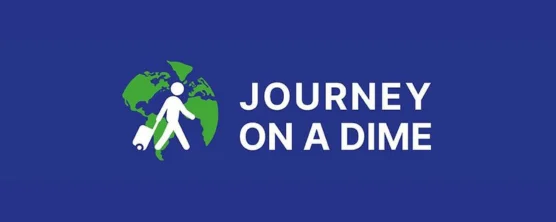10 Must-Visit National Parks in Canada for Nature Lovers

Stretching from the Atlantic to the Pacific and up into the Arctic Circle, Canada is a country defined by wilderness. Its national-park system safeguards more than 186,000 square miles of lakes, mountains, tundra, and temperate rainforest—an outdoor playground roughly twice the size of Wyoming. If you’re a U.S. traveler craving wide-open spaces, abundant wildlife, and that unmistakable fresh-pine smell, the following guide highlights ten unforgettable Parks in Canada. You’ll learn how to get there, what makes each park unique, and insider tips that turn a quick weekend trip into a once-in-a-lifetime memory. By the end, you’ll be ready to stamp your Parks Canada Discovery Pass and hit the trail.
1. Banff National Park, Alberta
Canada’s first national park remains its most famous. Banff delivers a cinematic blend of jade-green Lake Louise, jagged peaks along the Icefields Parkway, and postcard mountain towns. Fly into Calgary, rent a car, and you’re standing beside glacial water in under two hours. Summer promises near-endless daylight for hiking Cory Pass or paddling Moraine Lake, while winter lures skiers to Sunshine Village and Lake Louise Ski Resort. Arrive before 7 a.m. to nab parking at hotspots, or use the Roam public-transit buses. Because Banff is one of the busiest Parks in Canada, advance campground or hotel reservations are essential—six months is not too early.
2. Jasper National Park, Alberta
Drive north from Banff and you’ll cross into its wilder sibling, Jasper. The Icefields Parkway itself—often called the world’s most scenic highway—is reason enough to visit. In Jasper, dark-sky status means the Milky Way shines like a cosmic river over Athabasca Glacier, and September’s annual Dark Sky Festival pairs astronomy talks with stargazing parties. Wildlife sightings are frequent; keep a respectful distance from elk in fall rut and sleepy black bears grazing roadside dandelions. For hikers, the Sulphur Skyline trail rewards a leg-burning climb with 360-degree views, then soothes sore muscles at Miette Hot Springs.
3. Yoho National Park, British Columbia
Yoho sits just west of Banff across the provincial border but sees a fraction of the crowds. Emerald Lake is ringed by cedar forests and cliff walls that mirror perfectly on still mornings, and the Burgess Shale fossil beds chronicle life half a billion years old. Takakkaw Falls—one of the tallest in Parks in Canada—cascades 1,260 feet, thunderous in early summer melt. Base yourself in the tiny hamlet of Field for cozy cabins and the legendary cinnamon buns at Truffle Pigs Bistro. Yoho’s cooler nights make wildlife active; dawn drives often reveal bighorn sheep navigating roadside ledges.
4. Gros Morne National Park, Newfoundland and Labrador
Few landscapes are as geologically dramatic as Gros Morne. Its ancient Tablelands are fragments of Earth’s mantle thrust skyward, so hikers walk on orange-brown rock where nothing but hardy alpine plants grow. Elsewhere, Western Brook Pond—a former fjord—sits glassy beneath 2,000-foot cliffs. Boat tours cruise its glacier-carved canyon, though hardy trekkers can tackle the six-mile Western Brook Gorge hike for eagle-eye views. This corner of Atlantic Canada remains refreshingly uncrowded; midsummer temperatures hover in the 60s °F, perfect for moose spotting along coastal bogs.
5. Pacific Rim National Park Reserve, British Columbia
Wave-lashed beaches, towering Sitka spruce, and the surf town vibe of Tofino blend into pure West Coast magic at Pacific Rim. Fly into Vancouver Island’s tiny Tofino-Long Beach Airport or take the scenic four-hour drive from Victoria. The 47-mile West Coast Trail challenges backpackers with ladders, cable cars, and tidal crossings, while day hikers can sample the gentler Rainforest Trail boardwalks. In spring, gray whales migrate offshore, and tide pools brim with rouge-painted sea stars and anemones—one of the richest coastal ecosystems among all Parks in Canada.
6. Fundy National Park, New Brunswick
The Bay of Fundy claims the world’s highest tides—water rises and falls up to 50 feet twice a day, revealing crimson sea-floor mudflats and sculpted sandstone. At Fundy National Park you can kayak among sea stacks during high tide, then a few hours later walk the very seabed you paddled. Inland, 25 waterfalls cascade through Acadian forest laced with maple and spruce. U.S. visitors often add a side trip to Hopewell Rocks Provincial Park 30 minutes away, yet Fundy itself offers quieter trails like Laverty Falls and the Moosehorn/Third Vault combo.
7. Prince Edward Island National Park, Prince Edward Island
PEI is Canada’s smallest province, but its dune-framed beaches rival the Outer Banks for soft sand and warm summer water. Cyclists adore the 273-mile Confederation Trail network, but within the park, the Gulf Shore Way hugs crimson sea cliffs and lupine-studded meadows. Fans of Lucy Maud Montgomery can tour nearby Green Gables Heritage Place, then picnic under whispering pines at Cavendish Beach. Being one of the most accessible Parks in Canada for families, PEI provides supervised beach areas, wheelchair-friendly boardwalks, and gentle waves ideal for first-time ocean swimmers.
8. Waterton Lakes National Park, Alberta
Waterton forms the northern half of the Waterton-Glacier International Peace Park, a UNESCO World Heritage Site that links Canada and the United States. Iconic Prince of Wales Hotel overlooks emerald Upper Waterton Lake, where kayak rentals enable transboundary paddles (bring your passport for the Goat Haunt port). Hikes range from easy Bertha Falls to strenuous Crypt Lake—reached by boat shuttle, ladder, and narrow cliff tunnel. Wildflowers explode in July, blanketing valleys with pink fireweed and Indian paintbrush. Because it’s less crowded than nearby Glacier, Waterton often feels like a hidden gem among Parks in Canada.
9. La Mauricie National Park, Quebec
Midway between Montreal and Quebec City, La Mauricie’s forest-rimmed lakes offer a tranquil playground for canoeists and anglers. The park’s 160 lakes interconnect through portages ideal for multi-day canoe-camping loops. In autumn, sugar maples ignite in shades of crimson and gold—arguably one of the most impressive fall-color displays in Parks in Canada outside the Rocky Mountains. For day visitors, the 10-mile Mekinac trail climbs to panoramic lookouts across the Laurentian hills; bring binoculars to spot loons and the occasional bald eagle gliding over Lac à la Pêche.
10. Kluane National Park and Reserve, Yukon
If raw, untouched wilderness calls your name, Kluane answers with Canada’s highest peak—Mount Logan at 19,551 feet—and the largest non-polar icefield on Earth. This is a land of grizzly bears, Dall sheep, and midnight-sun backpacking. Most visitors book a scenic flight from Haines Junction to witness the crevasse-studded glacier system, while fit trekkers tackle the multi-day Slims River West route to the toe of Kaskawulsh Glacier. July and August offer the most reliable weather, though even midsummer nights dip into the 40s °F. Because Kluane is one of the remotest Parks in Canada, be self-sufficient: carry bear spray, satellite communication, and extra days of food.
Planning Your Canadian Park Adventure
Getting There
Major U.S. hubs like Seattle, Detroit, Boston, and Minneapolis offer nonstop flights into gateway cities—Calgary for Banff/Jasper, St. John’s for Gros Morne, and Vancouver for Pacific Rim. Rental-car demand spikes in July and August; booking three months ahead secures better rates. For eastern destinations, VIA Rail’s Ocean route connects Montreal to Halifax and Moncton, placing several parks within easy day-trip range.
Park Passes & Fees
U.S. citizens need a passport or NEXUS card to cross the border. Day passes run from 8–11 CAD per adult, but a Parks Canada Discovery Pass covers unlimited entry to all Parks in Canada for about 75 CAD (roughly 55 USD). Seniors receive a 20 percent discount; children under 18 enter free.
Best Time to Visit
Late June through early September guarantees accessible high-elevation trails and warmest lake temperatures, yet shoulder seasons bring perks too. September delivers golden larch trees in Banff, bug-free canoeing in La Mauricie, and northern-lights displays in Jasper and Kluane. Many campgrounds close by mid-October, so confirm dates before arrival.
Wildlife Etiquette
Black bears and elk appear tame but can charge if provoked. Stay at least 100 yards from bears, 25 yards from other large animals, and never feed wildlife. Use bear-proof lockers for food storage and pack scented items, including toothpaste, into airtight containers.
Leave No Trace
Carry reusable water bottles (tap water in most Parks in Canada is potable), pack out all garbage, stick to marked trails to protect fragile alpine plants, and buy local firewood to prevent invasive insect spread.
Frequently Asked Questions
Do I need a special visa to visit Canadian national parks?
U.S. citizens only need a valid passport for stays up to six months. If flying into Canada, you do not require an Electronic Travel Authorization (eTA).
Are dogs allowed in Parks in Canada?
Yes, but they must stay leashed at all times and are prohibited on certain backcountry routes and boardwalks. Always pack out pet waste.
Can I camp without reservations?
Some remote backcountry sites operate on a first-come basis, yet front-country campgrounds—especially in Banff, Jasper, and Fundy—sell out months ahead. Reserve early through the Parks Canada website.
What’s the best park for families with young children?
Prince Edward Island National Park offers gentle bike paths, supervised beaches, and short interpretive trails perfect for kids.
Which Parks in Canada require bear spray?
Bear spray is strongly recommended in Banff, Jasper, Yoho, Waterton, Kluane, and Pacific Rim. U.S. travelers may bring bear spray across the border if it’s labeled for wildlife (not self-defense) and has a proper safety clip.
Is there cell service in remote parks?
Coverage is reliable near visitor centers but fades quickly in backcountry zones like Kluane or Gros Morne’s Long Range Mountains. Rent a satellite messenger for emergencies.
When can I see the northern lights?
Late August to early April offers the darkest skies. Jasper’s Dark Sky Preserve and Kluane’s high latitude provide excellent aurora viewing when solar activity cooperates.
Image Source: https://www.needpix.com








